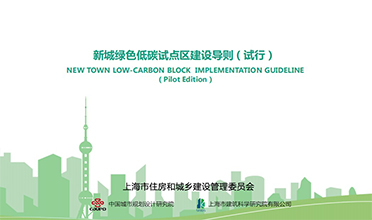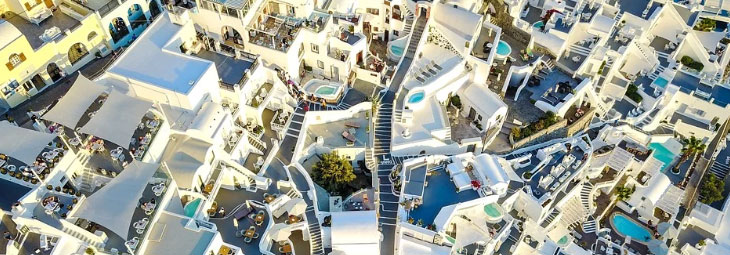



4 Public transportation-oriented low-carbon transportation mode
4.1 Overall requirements
The guideline proposed that the new cities should build a low-carbon transportation system with low energy consumption and low emission. The new cities should reduce the energy consumption of urban transportation system on the premise of meeting the social and economic development needs. The carbon emissions per unit of passenger volume should be reduced by developing a public transportation system and giving priority to right-of-way for multi-passenger vehicles. The government should guide urban residents to choose low-carbon travel modes by building a continuously accessible pedestrian system. Eventually the new city will reduce the reliance on fossil high-carbon energy in urban transportation system and achieve the purpose of controlling and mitigating carbon emissions.
4.2 Convenient and accessible public transportation
1) Build a public transportation system with efficient connections, multiple interchanges and convenient access
The new city should provide a multi-mode public transport system consisting of railroads, subways, conventional buses and auxiliary buses, and strengthen the effective connection of various public transport systems. The transportation system should include a reasonable layout of short barge bus lines, to solve the problem of “the last mile" for urban residents. In addition, the new city should also orderly promote the construction and operation of park-and-ride facilities (P+R) to provide more convenient and diverse travel services. In areas where railway transportation is not integrated with the urban area, additional medium-capacity transportation systems such as rapid bus transit and bus-only lane systems should be installed according to actual commuting needs.
2) Improve the coverage of public transportation station service area
The new city should have a reasonable layout of public transportation stations and match the layout of industrial centers and public service centers at all levels, so that the ratio of area covered by 500 meters of public transportation stations is not less than 90%.
4.3 Continuous and comfortable slow-moving system
1) Planning to promote the "road plus" project
The design of the slow-moving system should comprehensively consider factors such as ecological environment, function and building style, and coordinate the layout of road shading, street furniture, environmental monitoring and other facilities along the street to improve the quality of the walking and cycling environment.
2) Increase the network density of the greenway system
The greenway system includes bicycle paths and pedestrian paths. The bicycle lane system should set the one-way traffic width of the bicycle-only road according to local conditions and arrange the parking spots in combination with the main attraction points. The pedestrian system should determine the width of the pedestrian path based on the flow of pedestrians, and reasonably control the distance between the facilities across the street to improve convenience and friendliness.
3) Connecting backbone greenways
According to the municipal, district-level and community-level greenway setting requirements, the backbone greenways shall be rationally laid out. The layout of greenways should also consider the distribution of water systems, green space and forest land, and connect major ecological nodes to realize the interconnection of important ecological patches in the region.
4) Build a functional composite slow traffic network
New city construction should integrate the layout of the slow traffic network with urban functions, link residential areas, parks, neighborhood centers, schools, sports facilities, bus and rail stations through the slow traffic network, and integrate various functions such as leisure, health, cultural experience and livelihood services along the slow traffic network to realize the functional compound of the slow traffic network.
5) Protection of pedestrian right-of-way in walking spaces
In the construction of new cities, pedestrian and non-motorized lanes should be reasonably set up according to the layout of the land, the ratio of sidewalks, bicycle lanes and green space to the width of the road red line should be improved, and a pleasant walking environment should be created by setting up personalized service facilities such as guidance instructions, barrier-free access, shading facilities and seats.
4.4 Green and safe low-carbon transportation facilities
1) Reasonable allocation of electric vehicle charging piles
New cities should strengthen the supply of static transportation facilities such as electric vehicle charging stations and bicycle rental points. Specific measures include the following: 1) According to the routes of clean energy public transportation, the reasonable layout of renewable energy charging stations, gas filling stations, new fuel refueling stations and other facilities. 2) The proportion of parking spaces with charging facilities in newly built public area parking lots (depots) is not less than 15% of the total parking spaces. 3) Strengthen the construction of operational fast charging piles of 60KW and above, to ensure that the proportion of parking spaces equipped with fast charging equipment in new (modified and expanded) parking lots is not less than 30% of the total charging spaces. 4) The fixed parking spaces in new residential communities should be reserved for the construction and installation of charging piles.
2) Provide shared parking facilities
Public parking lots in new cities should be configured with shared parking spaces, and institutions and state-owned enterprises should open parking resources for staggered sharing. At the same time, intensive parking methods such as mechanical parking garages, underground parking garages or three-dimensional parking garages should be encouraged.
3) Construction of intelligent transportation system platform
The new city should carry out the construction of regional parking information sharing platform, recommend the construction of "Internet + parking" intelligent parking information system, promote intelligent parking guidance system, and encourage the construction of a smart transportation demonstration area.
Source: <https://zjw.sh.gov.cn/jsgl/20220301/4f85d9ad98954bee9004a0d6d529f086.html>
Edited and translated by Hou Ying